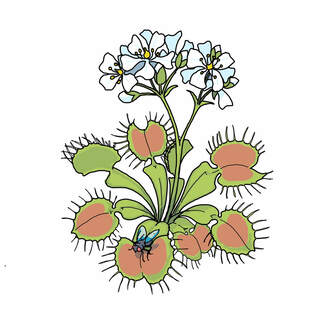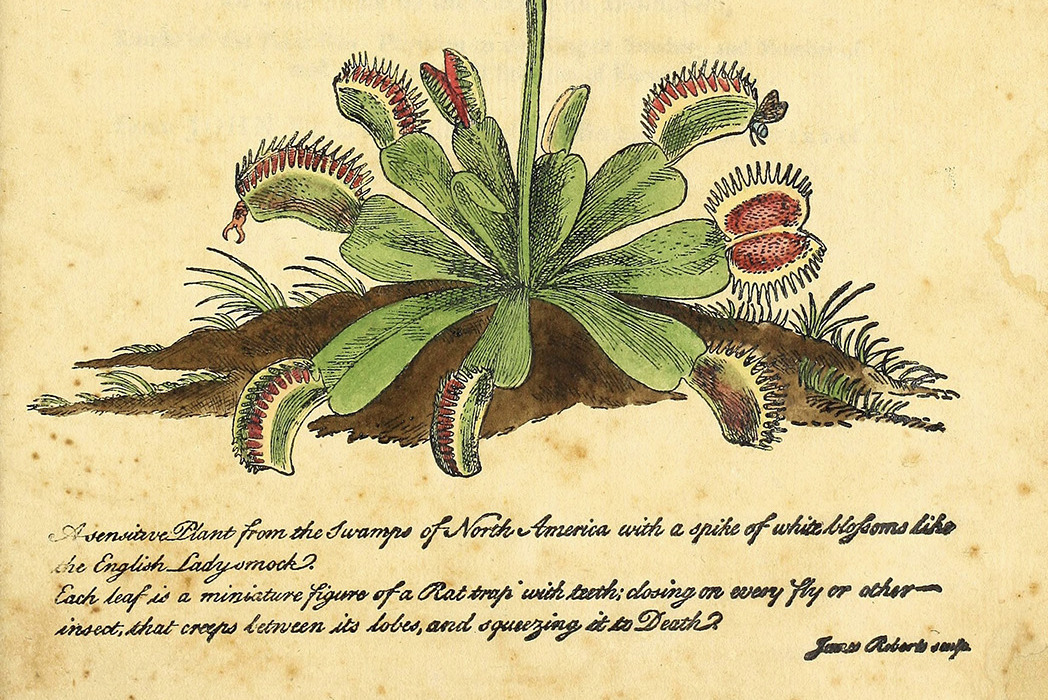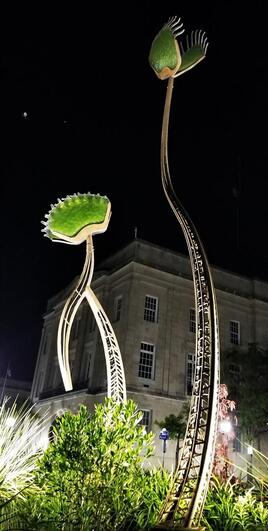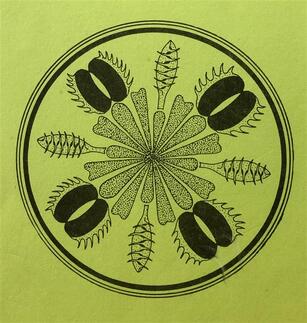Venus Flytrap in art, literature, and culture
Humans have long been fascinated by the more unusual plants of our world. Charles Darwin dubbed Venus Flytrap "the most wonderful plant in the world." Tennessee Williams commented on it in his play Suddenly Last Summer: “The Venus flytrap, a devouring organism, aptly named for the goddess of love.” At times this fascination has evolved toward the fantastical--for instance with exotic tales of "monster plants."
|
Landscape architect/artist Preston Montague created this image of Venus Flytrap. His work aims to "encourage stronger relationships between people and the natural world." Montague also created the design for the proposed North Carolina Venus Flytrap License Plate.
|
Graphic artists, storytellers, even tattoo artists and clothing designers have been inspired by the Venus Flytrap and other carnivorous plants. The slideshow above offers just a few examples--including a reminder of the 1986 cult classic film, "Little Shop of Horrors."
|
|
Botanical artists of the 18th and 19th Centuries created striking images of Venus Flytrap and many other plants. An article from JSTOR Daily gives an overview of Europeans' fascination with Venus flytrap and other carnivorous plants.
|
Venus Flytrap has been an inspiration to sculptural artists. The city of Wilmington, NC, erected a Flytrap statue, titled "Southern Hospitality" and created by artist Paul Hill, in recognition of the plant's native occurrence in this region of Carolina coast (photo at right by Johnny Randall). A similar sculpture, also by Paul Hill, was installed in Fayetteville, NC. |
|
A fascinating bit of history is HERE explained by historian David Cecelski while visiting the archives of the Linnean Society in London: the first known written record of Venus flytrap, in a letter penned by North Carolina's colonial governor Arthur Dobbs on April 2, 1759!
Dobbs's description begins with these words, “We have a kind of Catch Fly Sensitive . . ." |
|
Cynthia Woodsong, artist and volunteer at the North Carolina Botanical Garden, makes paper flower replicas of native plants found in North Carolina—including Venus flytraps. “I really want to make these as true to life as possible,” says Woodsong. To do that, she observes the plants in their natural habitat and refines her creations. For instance, at first she made the flytraps’ trigger hairs out of finely twisted paper, but later discovered that thick silk thread dipped in glue was more realistic and true to size.
Woodsong hopes her accurate replicas can be used for educational purposes. They can be touched and observed without concern about accidentally breaking a vulnerable plant. Read more about these beautiful creations HERE. Visit the NCBG Garden Shop, in person or online, get one for yourself! |
|
Scientific illustrator Renaldo Kuhler, who worked at the North Carolina Museum of Natural Sciences for many years, is believed to have created this beautiful stylized image (above) of Venus Flytrap in the 1970s.
|









